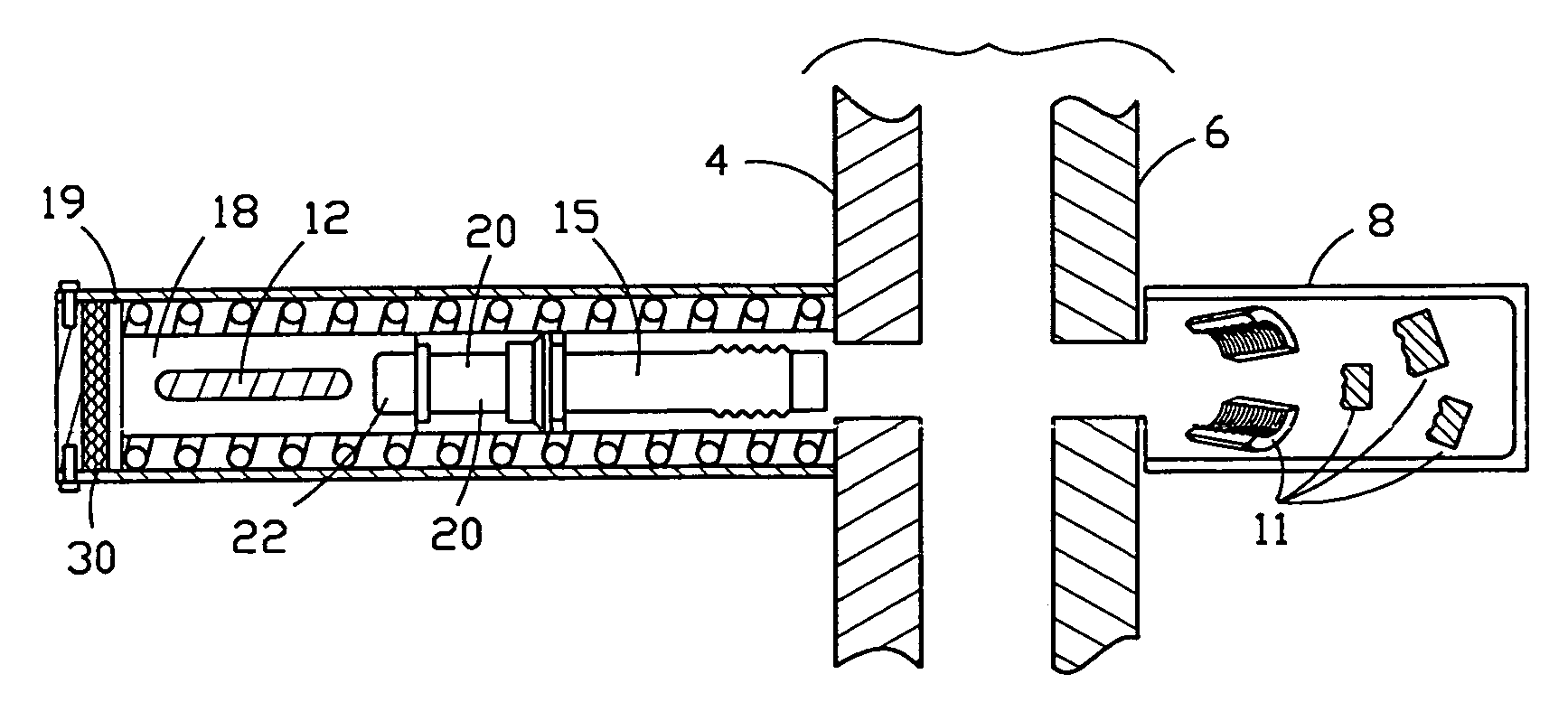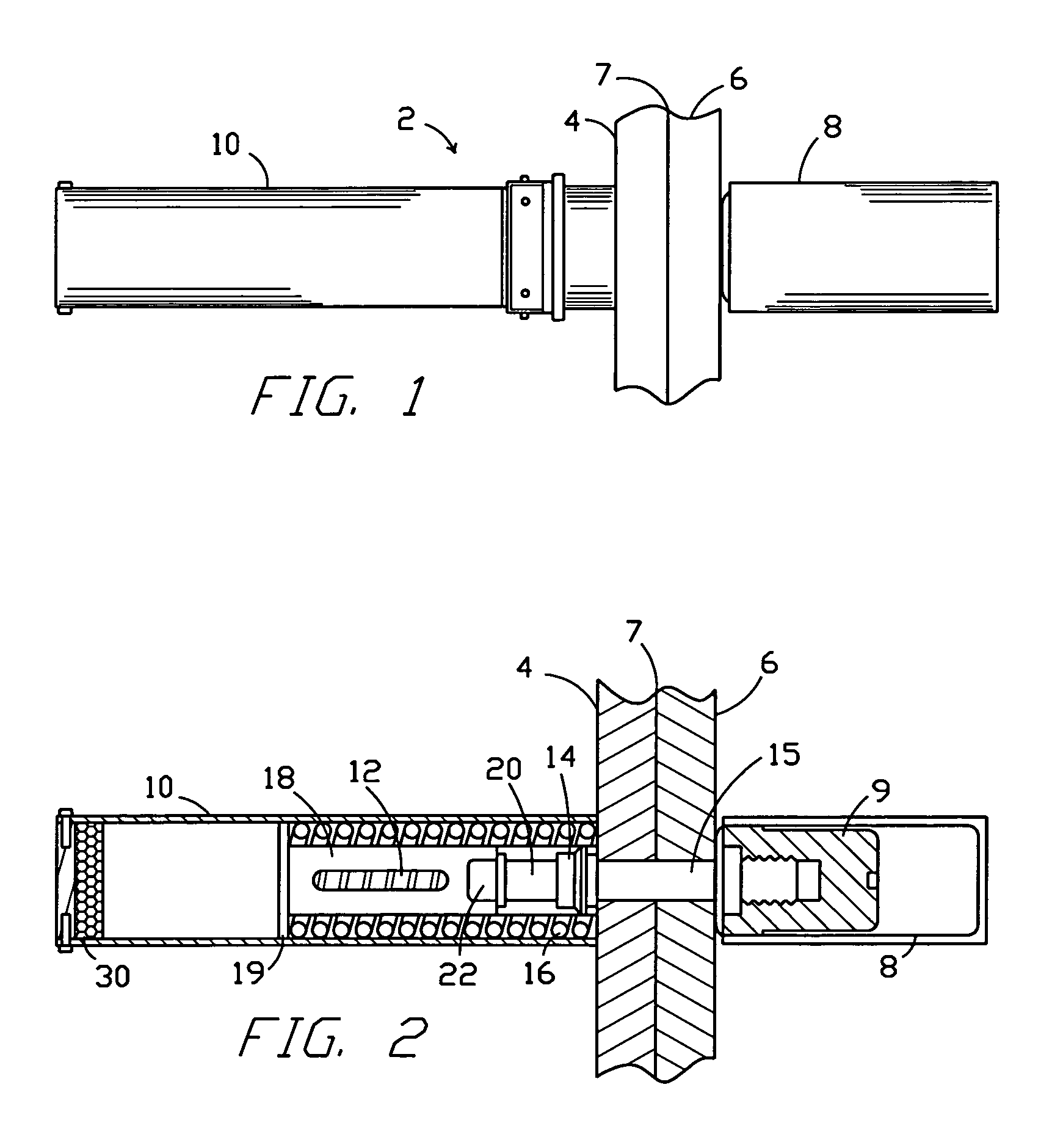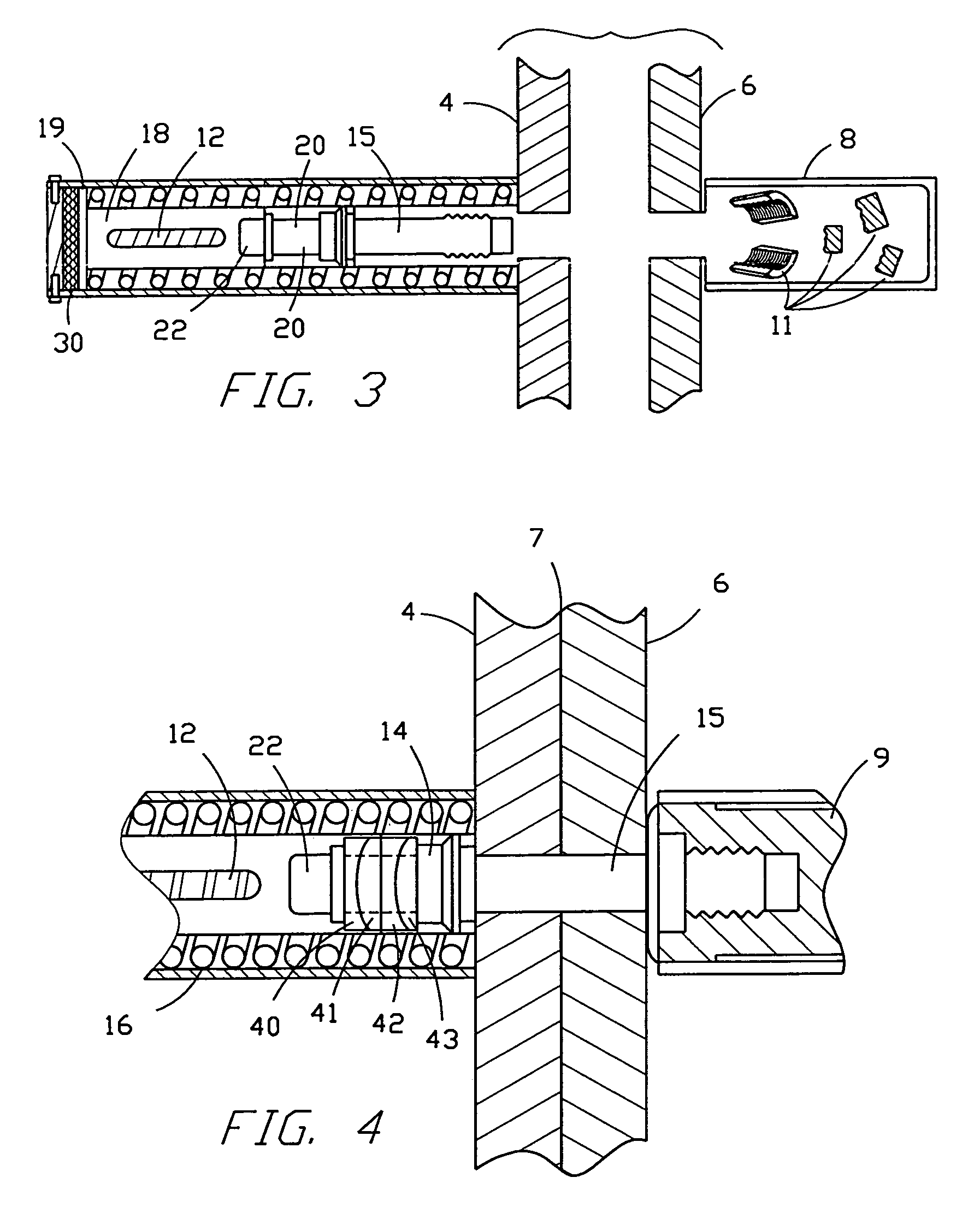Releasable locking mechanisms
a locking mechanism and lock mechanism technology, applied in the direction of screws, traffic signals, roads, etc., can solve the problems of mechanical shock, separation devices are still subject to limitations and disadvantages, and the whole project could be impacted,
- Summary
- Abstract
- Description
- Claims
- Application Information
AI Technical Summary
Benefits of technology
Problems solved by technology
Method used
Image
Examples
example 1
Procedure
[0025]A pyrotechnic shock facility was used to perform pyrotechnic tests, shock tests, and pyrotechnic shock tests of both pyrotechnic and nonpyrotechnic systems and components of the invention. The bolt retractor system hardware and test fixtures were bolted to a reaction mass in a test chamber with the forward interference truss and lifting body longeron held in place by test fixtures.
Results
[0026]The test fixtures did not simulate the X-38 vehicle / deorbit propulsion stage separation event, but the functional demonstration showed that the bolt retractor system functioned properly without damaging its components and causing a safety hazard. The demonstration also provided a good estimate of bolt separation timing.
example 2
Procedure
[0027]The X-38 vehicle / deorbit propulsion stage separation event was demonstrated on a Large Mobility Base. It is a large air-bearing simulator which is allowed to float across an epoxy resin floor by three air bearings. It thus acts as an air sled flowing, across the air-bearing floor propelled by air jet thrusters. The function of the large mobility base is to provide a free-floating vehicle and interface for bolt retractor retraction algorithm testing. It is adapted to run either a Windows or Linux operating system. The bolt retractor system of the invention was mounted on the large mobility base. The large mobility base was maneuvered onto a stand and the retractor system bolt was torqued to the required specifications. The nut separation pyrotechnics were fired and the vehicle movement was measured. Two accelerometers and a gyroscope were mounted in the center of mass to sense both the X and Y acceleration compoonents along with yaw rate. Three laser rangefinders were ...
example 3
Procedure
[0029]Proper recording of the precise moment the bolt separation device activated was needed for subsequent data analysis. Since the data acquisition system was on the Large Mobility Base and the pyrotechnic device was stationary, a method was needed for the firing signal to cross the interface without impacting the large mobility base ability to free-float.
Results
[0030]The solution was to use a light emitting diode and phototransistor. The large mobility base mount contained the phototransistor while the light emitting diode was in the base. The light emitting diode was contained in a two-piece mounting bracket created by connecting two base mounts. Alignment pins were used to establish a positive alignment.
PUM
 Login to View More
Login to View More Abstract
Description
Claims
Application Information
 Login to View More
Login to View More - R&D
- Intellectual Property
- Life Sciences
- Materials
- Tech Scout
- Unparalleled Data Quality
- Higher Quality Content
- 60% Fewer Hallucinations
Browse by: Latest US Patents, China's latest patents, Technical Efficacy Thesaurus, Application Domain, Technology Topic, Popular Technical Reports.
© 2025 PatSnap. All rights reserved.Legal|Privacy policy|Modern Slavery Act Transparency Statement|Sitemap|About US| Contact US: help@patsnap.com



